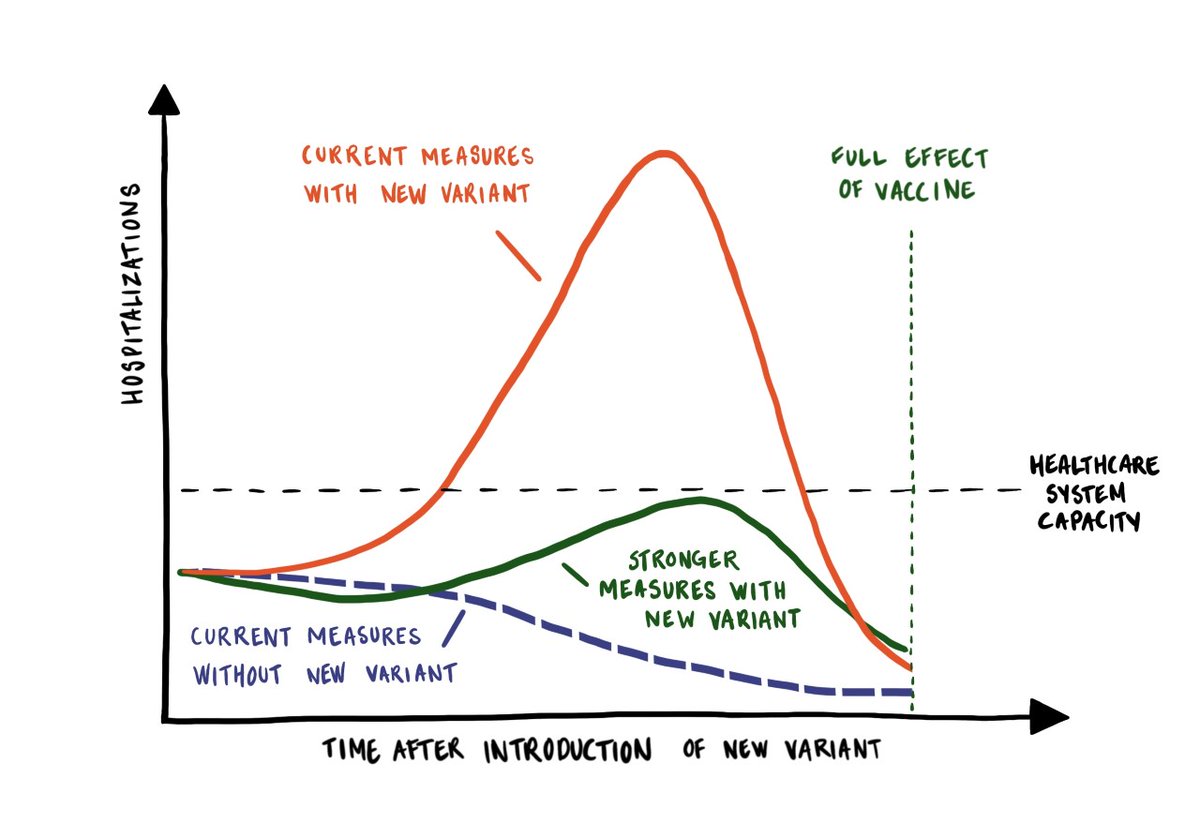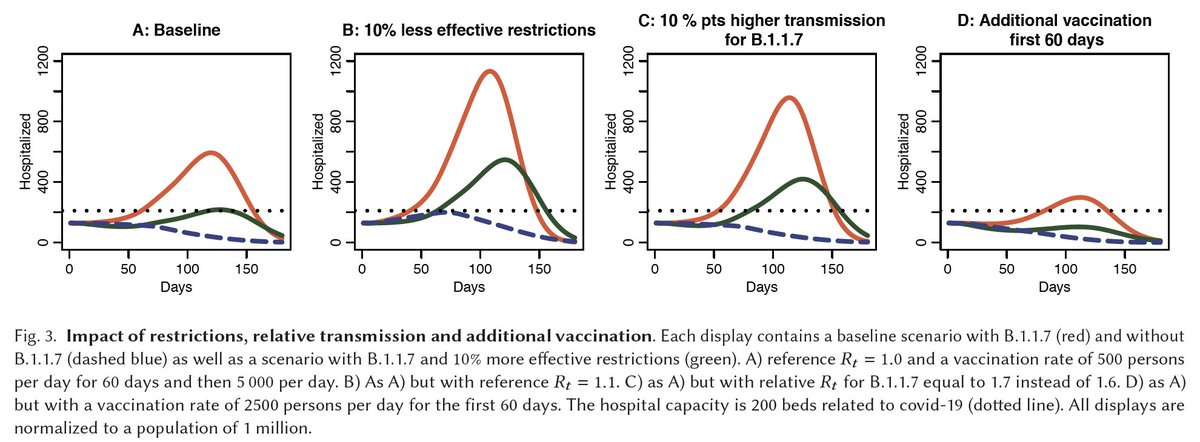We face a race between new corona variants & vaccines. Stronger measures are urgent. To motivate fatigued publics, hope is more effective than fear & can be given via a new powerful visual aid: https://psyarxiv.com/gxcyn . Don't say "flatten the curve". We need to "buy time".  (1/7)
(1/7)
 (1/7)
(1/7)
The "flattening the curve"-graph played a key motivating role in initial phases of the pandemic. The message was: Move infections from the present to the future. With vaccines, this is no longer the case as they remove future infections. Those saved now are saved for good. (2/7)
Yet, more infectious variants require stronger epidemic control here and now ( https://www.cell.com/cell/pdf/S0092-8674(21)00087-8.pdf?_returnURL=https%3A%2F%2Flinkinghub.elsevier.com%2Fretrieve%2Fpii%2FS0092867421000878%3Fshowall%3Dtrue). Publics globally are fatigued ( https://apps.who.int/iris/bitstream/handle/10665/335820/WHO-EURO-2020-1160-40906-55390-eng.pdf) and, hence, motivating health communication is as important as ever. (3/7)
Research during the pandemic has shown that feelings of hope are as, if not more, important than feelings of fear ( https://journals.sagepub.com/doi/full/10.1177/0956797620959594?casa_token=h2g2Zrg_tFkAAAAA%3AJj1gfBYL2cOLUh6_2JblfSXvTVaoSX_Rd0j39rw4G_mxwCXb7wWP5WW3w5Dm_a7rovP9KF-ml6go). A new visual comm aid should not only be epidemologically realistic but also speak to the human capacity for hope. (4/7)
The "buying time with hope"-graph is build on epidemological models of the variants-vs.-vaccines race. In an experiment (N=3,022), it increases support for stronger measures & adherence to health guidelines. A graph focused just on the threat of the new variants doesn't. (5/7)
Motivating publics against new variants is urgently needed. In cross-national surveys (N=3,995), only 58 % report changed behavior because of new variants, even if 83 % know of them. This applies even in UK, the most affected country. Knowledge doesn't always breed change. (6/7)

 Read on Twitter
Read on Twitter






